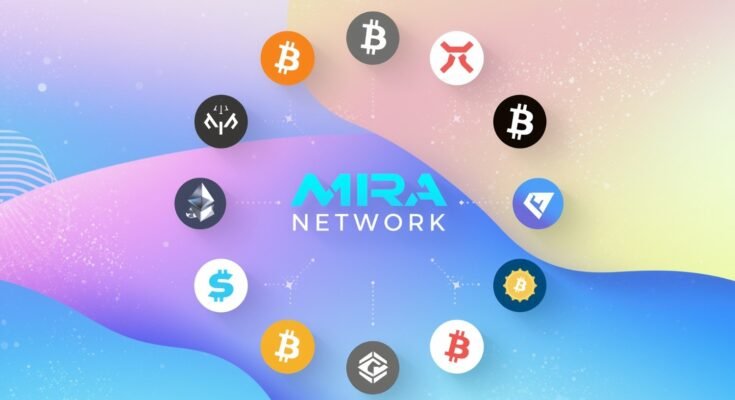Meta Description: Free Mining on MIRA NETWORK with LUMIRA MINING – discover how Lumira coin and the MIRA app work, how to boost your mining rate, key features, security, Pi Network comparison, earning tracking, withdrawals, and the future roadmap.
Free Mining on MIRA NETWORK: Introduction to LUMIRA Mining Ecosystem
The MIRA Network is a “next-generation blockchain ecosystem designed to tokenize real-world companies and assets”. In practical terms, MIRA lets community members become fractional shareholders in businesses (earning shares) and also rewards participants through mining and airdrop activities on its MIRA-20 blockchain. At the heart of this ecosystem is Lumira Coin – a community-focused cryptocurrency that you can mine for free. Official sources describe Lumira as a “dynamic stable coin fueled by the Swiss franc” whose value “grows with every user, transaction, and ecosystem success”. In other words, Lumira is a stable community coin (backed by CHF) that users earn simply by engaging with the network. The MIRA Network app (“Airdrop Token” app) is the main platform for this free mining. It “empowers users to mine free Lumira Coins” through daily cloud-mining sessions and airdrop events. This makes Lumira Mining very accessible: anyone with a smartphone can participate, without the high energy cost of traditional mining.
Start mining now:
Website: https://miranetwork.io
✅Sign up with my referral code to earn +1 Lumira: athar104 / usman619
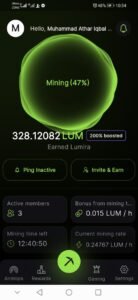
Authenticity of Mira Network
MIRA Network presents itself as a Swiss-registered blockchain startup (“MIRA Network AG, Zug”) with a tokenized ecosystem. Public company records confirm a Swiss entity “MIRA Network AG” formed in July 2025, with a nominal capital of CHF 100k. The board members are listed as Dominique Letsch (Dutch), Zsófia Nagy (Hungarian/Swiss), and Joshua Elder (British). Company filings list its purpose as a “Web3 crowdfunding platform and blockchain-based innovations”. The domain was registered in Sept 2024 (with a privacy service) and is reportedly “online” in their report.
Team and Founders
Public records identify the key individuals: Dominique Letsch (CEO/Chair), Zsófia Nagy (Board), and Joshua Elder (Board). Joshua Elder is also the sole director of “Lumira Solutions Ltd” in the UK (formerly “Airdrop Solutions Ltd”), the company behind the MIRA mobile app. His Companies House filing (DOB June 1998) confirms he formed Lumira Solutions in Jan 2023 in London. Dominique (sometimes “Dominic”) Letsch has previously promoted another blockchain startup (“CNX-Network”); a 2022 press release quotes him as “CEO of CNX-Network” discussing creating a blockchain ecosystem. No LinkedIn or published track record was found for Zsófia Nagy beyond the Swiss company registry. In short, two of the three founders are verifiably real and involved in related crypto ventures (and a registered UK company), but their technical credentials are unclear.

Free Mining on MIRA NETWORK: What is LUMIRA Coin and Its Role in LUMIRA Mining
Lumira Coin (LUM) is the community cryptocurrency you earn from free mining. According to the official description, it is a “community coin you can mine for free with the MIRA app” whose stability is anchored by the Swiss Franc. In practice, Lumira’s role is twofold: it provides a reward token for users and a stable medium of exchange within the MIRA ecosystem. Its supply is fixed at 250,000,000 LUM, so every coin you mine comes out of this finite pool. Unlike volatile assets, Lumira is designed as a stablecoin – one page of the MIRA site explicitly notes it is a “new generation dynamic stablecoin fueled by the Swiss franc” whose value increases with network engagement. In other words, as more people mine and use Lumira in tokenized projects, the coin’s backing grows. For miners, Lumira’s stability means that each free token you earn holds a predictable value. The app and network team often refer to Lumira as a “stable community coin” precisely to emphasize this goal.
Free Mining on MIRA NETWORK: How the LUMIRA Mining App Works on Mobile and Web
Mining Lumira happens through the official MIRA Network app, available on both major smartphone platforms. On Android, search for “MIRA Network” (by Lumira Solutions) in the Google Play Store. On iOS, the app appears as “MIRA” on the Apple App Store (by Lumira Solutions Ltd). The Play Store description highlights that the app “empowers users to mine free Lumira Coins, participate in tokenized airdrop events, and become shareholders”. The Google listing explicitly encourages users to “Download the MIRA Network App now and start mining free crypto!”. The Apple App Store similarly calls MIRA an “all-in-one app to grow and hold your Lumira balance”, noting features like “start cloud mining sessions to earn Lumira tokens” and expanding your mining network. (For reference, you can find it on the Google Play Store and Apple App Store.)
Once installed, the app’s interface guides you through daily mining and earning. Mining is done via cloud-mining sessions: you typically tap a “Ping” or “Mine” button to start a session, and after a short interval, you collect Lumira tokens. Importantly, this process is energy-efficient – “Lumira mining does not require high computational power, making it accessible to everyone”. In other words, your phone isn’t actually crunching complex math (no heavy CPU use). The app simply logs your session and credits you in Lumira. In addition to mining, the app integrates social features: you can invite and chat with friends, form mining teams, and participate in community events or DeFi games. According to the MIRA FAQ, users can earn Lumira not just by mining but by engaging in “cloud mining activities, playing DeFi games, or participating in community-driven events”. There is no separate web-based miner to use – all mining and token earning currently happen through the app itself. The MIRA Network website (miranetwork.io) serves as an information portal and sign-up site, but does not replace the mobile app for mining.
Free Mining on MIRA NETWORK: Key Features, Benefits, and User Experience of LUMIRA Mining
The Lumira Mining app home screen (MIRA Network) shows your status and controls for mining. It displays your “Mining Rate” (e.g., 0.5 LUM/h), whether your next session is “Ping Active” or “Inactive,” and quick buttons like “Invite & Earn.” The top banner (Lumira logo) and clear labels make it easy to start daily sessions and track your Lumira balance.
The MIRA app packs several user-friendly features and incentives:
- Free Cloud-Mining: Every 24 hours (or in fixed intervals), you can start a mining session at no cost, earning Lumira tokens for simply keeping the app open. The official site calls it “Free Cloud-Mining”: just initiate daily sessions and receive Lumira Stable Coins at no cost. In essence, you get free crypto just by checking in.
- Referral & Team Bonuses: To boost your earnings, the app encourages referring friends. By inviting people to join your mining team, you multiply your Lumira accrual rate. The Lumira site explicitly says you can “boost your earnings by referring friends and building your earning team”. This invites a viral growth mechanism – more active users in your team means more Lumira per hour for everyone.
- Ad Rewards: The app allows you to watch video ads to accelerate mining. Currently, users report being able to view up to 5 ads in each 6-hour cycle to further increase their mining speed up to 20% against each ad. Each ad typically grants a temporary boost multiplier. (A user review notes they can watch “a total of 5 ads every 6 hours” to raise their mining rate.) This ad system is a common “free-to-earn” model: it’s optional, but it can significantly speed up your LUM mining up to 12 LUMIRA/day if you watch all 20 ads in 24 hours.
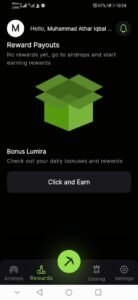

- Tokenized Airdrops: Beyond Lumira, the app offers tokenized equity events. Users can participate in airdrop campaigns where they earn actual shares (tokens) of startup projects, with dividend payouts. The Google Play listing highlights “Tokenized Airdrop Events – Receive company shares from startups and benefit from dividend payouts”. This is a bonus benefit: by being active in the app, you may gain entry into real investment events and extra tokens.
- Education & Rewards: The platform also includes blockchain courses. You can take free DeFi or crypto lessons within the app and earn NFT-based diplomas or certificates for completing them. This gamified learning is another way to earn extra crypto rewards and build knowledge.
- Eco-Friendly & Security: The MIRA cloud-mining app is explicitly designed not to drain your battery. The official site notes the mining app is “eco-friendly” and won’t tax your phone’s hardware. Security-wise, the app only deals with blockchain tokens, not real money, and the network uses standard blockchain transparency to protect users. (We cover more on security below.)
In terms of user experience, the app is streamlined. A single home page shows your total Lumira balance, current mining rate, and next session status. The “Invite & Earn” button is prominently displayed to grow your network. Users have praised the simplicity – e.g., one review said the app is “good and functioning” (noting minor bugs) and that after each session, you can immediately start another mining session. In practice, the interface makes it easy to see your Lumira hourly rate and team size at a glance. The combination of daily check-ins, social invites, and ad-watching creates a clear loop of activity: mine, watch ads (for boost), invite friends, and repeat. All of these features together reward active engagement on the MIRA Network.
✅Sign up with my referral code to earn +1 Lumira: athar104
Free Mining on MIRA NETWORK: Security, Transparency, and Legitimacy of LUMIRA Mining
Security and transparency are emphasized in the MIRA ecosystem. The developers state that all tokenization events are verified and run on-chain, reducing fraud. For example, the official roadmap says transactions are recorded on MIRA-20’s blockchain for “full transparency”. Only vetted businesses can tokenize their assets, and strict procedures (even 2FA for contracts) are in place to protect funds. The Lumira website itself touts a third-party security audit: it is “100% CISA+ secured” via their partner Capisoft. This suggests that at least some formal security compliance checks have been done on the software.
From a user data standpoint, the app appears quite privacy-friendly. The Google Play listing clearly states no personal data is collected or shared: “No data shared with third parties” and “No data collected” for personalization. In other words, you can mine Lumira without handing over your info or having your phone tracked. Combined with on-chain record-keeping, this reduces many common crypto app scams.
Finally, the project’s jurisdiction adds credibility. The MIRA Network is linked to entities in Switzerland and the UK (as per their site and Apple listing), and the Lumira team stresses legal compliance (see their roadmap, which lists compliance and licenses). All of this suggests that, unlike many anonymous “free mining” schemes, MIRA/Lumira operates with some degree of formal oversight and audit. In summary, Lumira Mining is presented as a legitimate, transparent platform: verified companies, blockchain records, and strict security practices are built into the design.
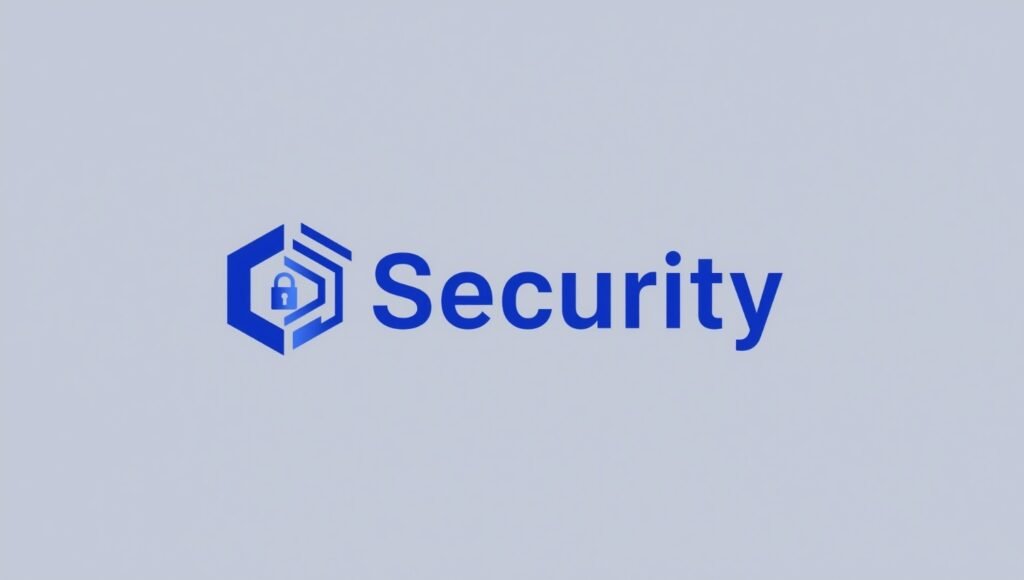
Free Mining on MIRA NETWORK: LUMIRA Mining Vs Pi Network Comparison
At a high level, Lumira (MIRA Network) and Pi Network share the core idea of free mobile mining, but they diverge in many ways:
- Mining Mechanism: Lumira uses cloud-based mining sessions. Users tap the app to start sessions and optionally watch ads to boost yields. Pi Network, by contrast, uses a Stellar-based consensus protocol; users “mine” Pi by proving they log in daily and by expanding a security circle of trusted members. In short, Lumira’s model is explicit cloud-mining at scheduled times, whereas Pi’s model is social consensus-based.
- Supply & Tokenomics: Lumira sets a fixed supply of 250,000,000 LUM (with roughly 27 million allocated for mining rewards). Pi Network’s maximum is vastly larger – on the order of 100 billion Pi coins, released through halving events. This means Lumira is much more scarce per coin, which could support value retention, while Pi’s huge supply emphasizes adoption over scarcity.
- Use Cases: Lumira is explicitly tied to real-world asset tokenization. MIRA aims to use Lumira as a transaction currency in projects that tokenize company shares and assets. Pi Network, on the other hand, broadly positions Pi as a general-purpose cryptocurrency for decentralized apps and everyday transactions once its ecosystem matures. In essence, Lumira is aimed at a specific investment ecosystem, while Pi aims for a more open-ended crypto economy.
- Development Stage: Lumira/LUMIRA mining is still very new. As of early 2025, it has attracted tens of thousands of new users very quickly (reports say 50,000+ sign-ups in a single day). Pi Network has been around since 2019 on testnets; it only just launched its mainnet in February 2025. In other words, Pi is more mature in development but still not fully tradable, whereas Lumira is in rapid growth and preparing for the mainnet and listing.
- Listings & Liquidity: Neither project has fully tradable tokens yet. Lumira Coin is “yet to be determined” for listing date (with an anticipated launch price around $0.20). Pi mainnet Pi is technically live, but official Pi Coins remain non-transferable except via unofficial IOUs on some exchanges. So at present, mining both is essentially collecting a token that can’t easily be cashed out – you hold it for the expected future launch.
- Community Size: Pi Network boasts an enormous user base (over 45 million users globally). Lumira is much smaller but growing – its Telegram community is on the order of tens of thousands (roughly 79k members cited) and download counts are in the hundreds of thousands. This means Pi has network effects on its side, but Lumira can still provide individual value to early adopters.
In summary, Lumira (MIRA Network) is one of several new “free mining” apps riding on the Pi concept, but it sets itself apart by targeting asset tokenization and using a stablecoin approach. Both offer easy mobile mining, but Lumira’s Tokenomics (stablecoin, limited supply) and ecosystem goals differ from Pi’s broad economic vision. Users interested in cloud-mining should consider which ecosystem they trust more and how each project’s roadmap aligns with their expectations.
Free Mining on MIRA NETWORK: Tracking, Withdrawing, and Holding LUMIRA Mining Earnings
The MIRA app itself provides a simple wallet and dashboard for your Lumira earnings. On the home screen, you’ll see your Total Balances (in LUM) and your current Mining Rate. As you mine Lumira each day, these values update in real time, so you can easily track how much you’ve earned and at what speed. The app also has a history of past sessions, so you can review your accumulated coins over time.
As of now, direct withdrawal is not available. Lumira Coin is not yet listed on any exchange or mainnet swap, so there is no way to transfer LUM out of the app. The official Tokenomics explicitly shows “Listing price: Yet to be determined” and “Release date: Yet to be determined” for Lumira. In practical terms, this means you hold any mined Lumira inside the MIRA Network wallet until the coin goes live on an exchange or blockchain. (The roadmap does indicate an eventual launch – it lists a planned release price around $0.20 – but the date is still TBD.)
Therefore, the recommended approach is simply to log in daily to continue mining and let your balance grow. Note that if you skip more than 24 hours, you may lose that day’s session (you must “reactivate” by pressing the button again). When Lumira eventually launches, there should be an update enabling coin withdrawal or swapping. Until then, your Lumira coins remain safely stored in the app’s internal wallet. In short: track your Lumira via the app’s UI, and hold it there until an official withdrawal/listing feature is released.
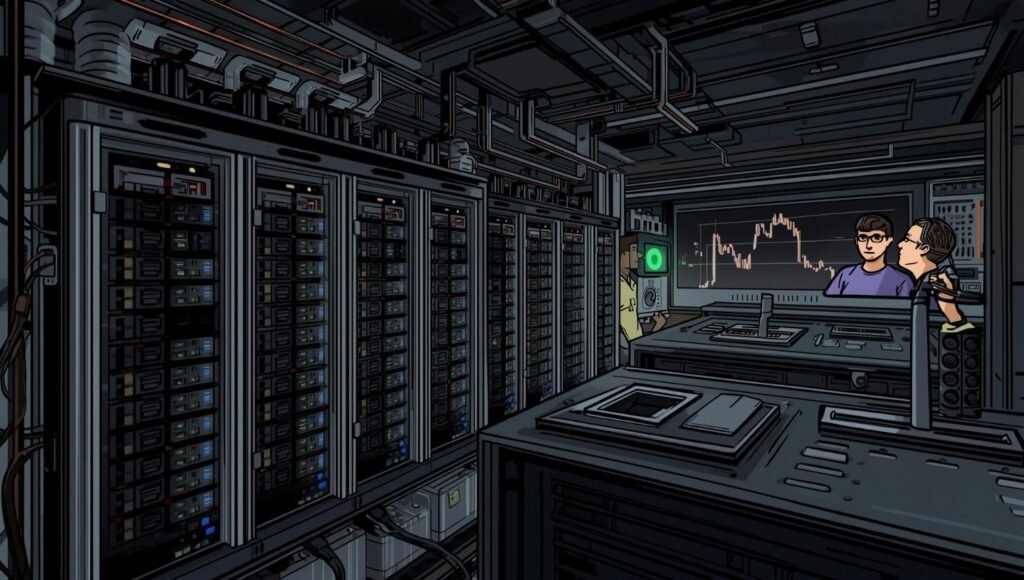
Free Mining on MIRA NETWORK: Future Roadmap and Token Vision of LUMIRA Mining
Looking forward, the MIRA Network has published an ambitious roadmap for 2025–2026. By design, Lumira Coin is a stable community coin, and the roadmap reflects how it will be integrated into real-world projects. MIRA’s site describes Lumira as a “dynamic stablecoin fueled by the Swiss franc,” with its value tied to user engagement. This vision underpins many planned milestones:
- 2025 Launch Goals: The company plans to establish MIRA Network AG in Switzerland and run the MIRA Coin ICO. At the same time, they will roll out new features like a gaming platform (MIRA Gaming) and an educational campus (“Miraversity”). They will also launch tokenized crowdfunding and airdrop events, publish a detailed whitepaper, and obtain necessary financial licenses. Crucially, they aim to grow the community to 500,000+ members through partnerships and marketing by the end of 2025. An Apple iOS version of the app is also on the list for release in 2025.
- Post-2025 Expansion: In 2026 and beyond, goals include securing a banking license, expanding educational content and tokenized markets, and improving network stability. They mention developing a mainnet wallet for Lumira coins, ensuring KYC compliance, and even launching DeFi services. By 2027, they target 100 million users, emphasizing that they will “focus on what our users need”.
In short, the roadmap envisions Lumira not just as a mining reward but as a fully integrated stablecoin in a global ecosystem of tokenized businesses. The project plans to use the profit from real asset tokenization to back Lumira’s liquidity pool, making it “the future stablecoin” for their community. As MIRA rolls out these milestones, Lumira miners can expect to see the currency gain real-world utility (and potentially value) as it powers dividends and transactions in tokenized companies. While all dates are tentative, the published plan shows a clear path: from free daily mining today to stable, tradable currency tomorrow, all under a shared vision of democratizing investment and crypto access.
Technical Details of Mira Network
MIRA Network claims to be building a “MIRA-20 blockchain” using a “Proof-of-Stake-Authority” (PoSA) consensus. However, no whitepaper or technical document is publicly available – the website’s Whitepaper section states the whitepaper is still under legal review. The site’s roadmap (2023–2027) is highly ambitious but vague (e.g., “Deploy MIRA-20 Testnet… banking license… 100M users”), and many milestones (ICO launch, tokenized companies) are “in progress” as of mid-2025. The only running software is the mobile app, described as “a next-generation blockchain application built on MIRA-20 (PoSA)”. In reality, the “MIRA” token is a Solana SPL token (trading on Raydium and Meteora DEXs). No mainnet explorer exists (the official explorer page just says “coming soon”). The app is Android-only, requires daily ad-watching to “mine” tokens, and collects basic KYC (users must submit their real name and phone for withdrawals).
Tokenomics and Smart Contracts
MIRA Network plans two tokens: MIRA Coin (utility token) and Lumira Coin (stablecoin allegedly pegged to Swiss francs). Official materials claim MIRA has a 27 million supply and Lumira 250 million, but third-party data differ sharply. Lumira Coin is not listed on major data sites/exchanges yet – its sole description is “stable coin, fueled by Swiss Franc” on the site.
Public and Social Existence
The Mira network project has garnered considerable interest from users. The official Android app (by Lumira Solutions) has over 1.2 million installs and ~8.9k user ratings (4.36/5 average) on Google Play. The app’s description and published screenshots highlight mining and airdrop tasks, implying an active promotion campaign. Online, a small but vocal community touts MIRA/Lumira. For example, a Binance community post (with 363 upvotes) enthusiastically notes, “I’m currently mining Lumira Coins for free… MIRA Network integrates advanced features like RWA tokenization, free cloud mining, and educational rewards”.
Final Assessment
Based on publicly available information, Mira Network appears highly speculative and of questionable credibility. It has a legitimate-looking corporate registration and a widely downloaded app, but lacks essential technical and regulatory foundations. The absence of a published whitepaper or audit, conflicting Tokenomics, and reliance on ad-based app mining are serious red flags. Any real projects or partners have not yet evidenced the core value proposition (tokenizing real-world assets and community airdrops). While the team is partially verifiable (one board member runs the app’s development company), their experience seems limited to marketing-driven crypto startups. In sum, Mira Network is best viewed as an experimental “app-and-coin” scheme rather than a mature blockchain platform. Prospective investors should be wary: all signs point to a project that is in the early concept stage with uncertain execution. But there is no risk to mine unless it is free, previously from PI network mining I earned 3000$ approximately, sometimes a blind trust or risking your time on such a project is worth a lot in the future, so I suggest everyone to mine Lumira for free also, use my referral link to get 01 LUMIRA COIN for free.
✅Sign up with my referral code to earn +1 Lumira: athar104 / usman619

